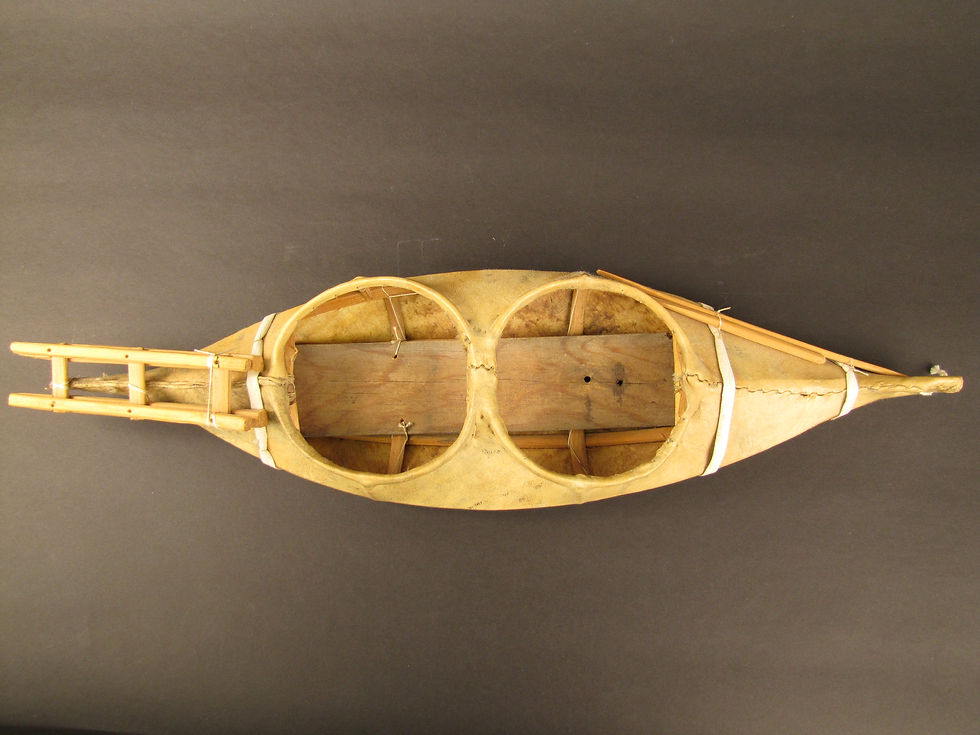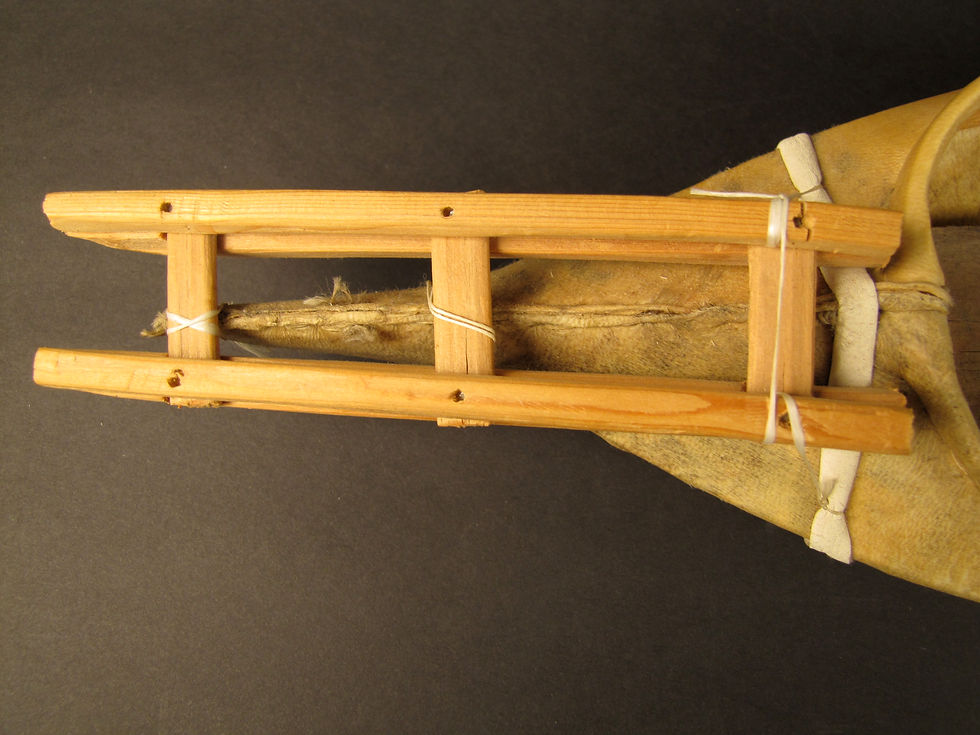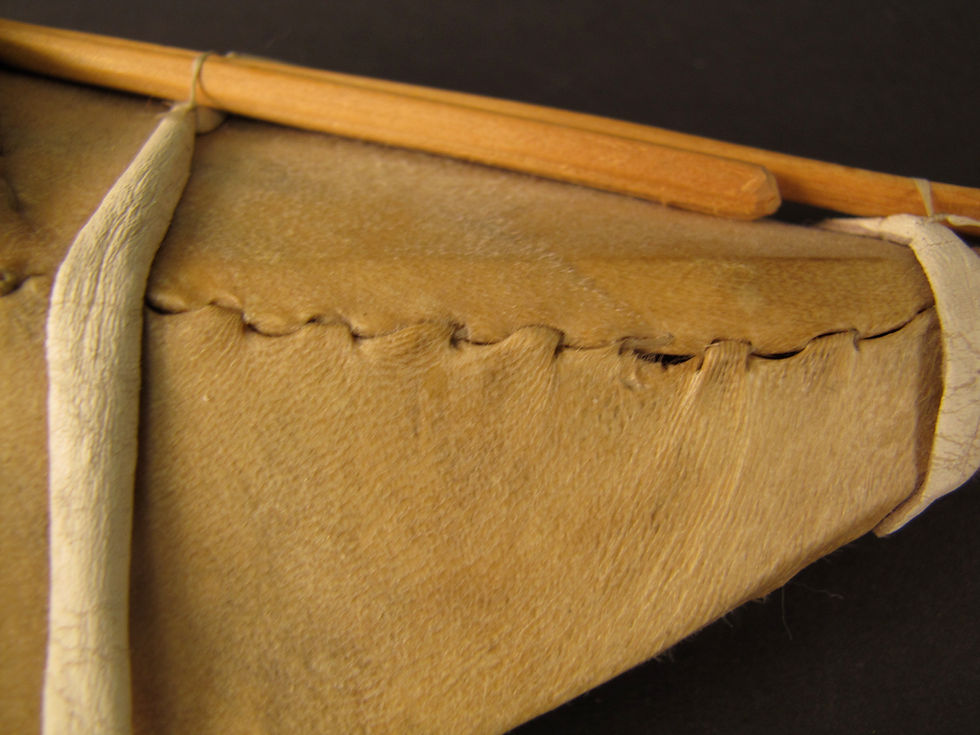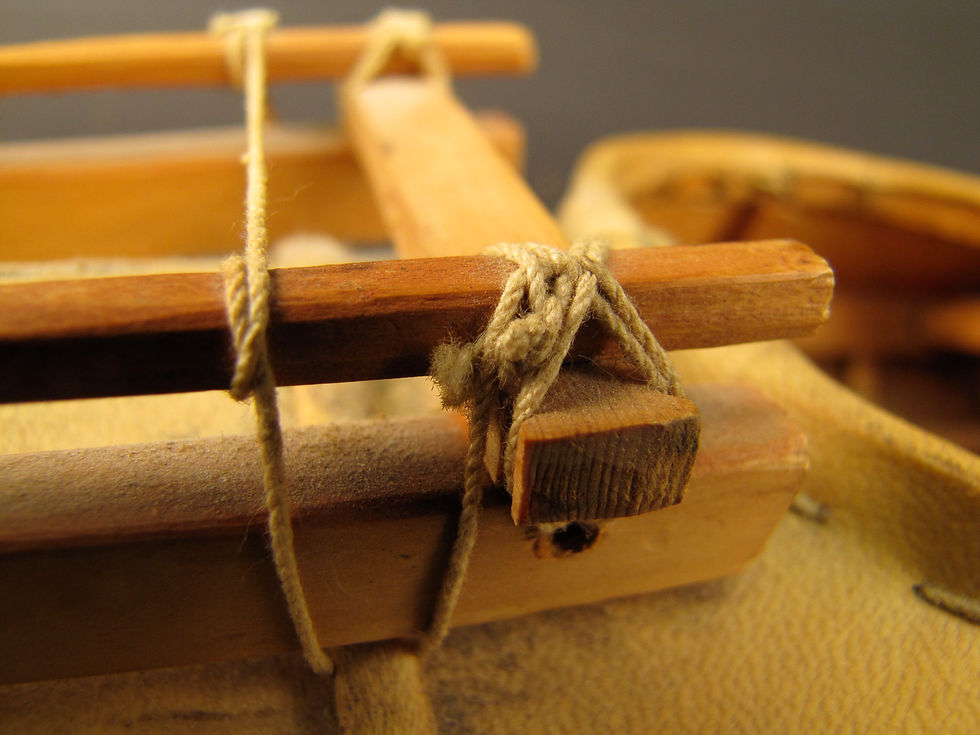The Jim and Vanita Oelschlager
Native American Ethnographic Collection

top to bottom: Model Kayak, ca. 1910 Alaska Territory. Hide, Wood. 1.5”x 10.5”x 1.5” NAI.100.2010 Model Kayak, ca. 1920-30 Alaska Territory. Hide, Wood. 1” x 9” x 1.25” NAI.107.2010 Model Kayak, ca. 1920-30 Alaska Territory. Hide, Wood. 1.5” x 8.5” x 1.25” NAI.108.2010 Model Kayak, ca. 1910 Alaska Territory. Hide, Wood. 1.75”x 10” x 1.5” NAI.109.2010

Alaska Territory or Western Canada. Hide, Wood. 3” x 20” x 5.25” NAI.111.2010

Alaska Territory or Western Canada. Hide, Wood. 3” x 20” x 5.25” NAI.111.2010

Alaska Territory or Western Canada. Hide, Wood. 3” x 20” x 5.25” NAI.111.2010

Alaska Territory or Western Canada. Hide, Wood. 3” x 20” x 5.25” NAI.111.2010




Model canoes and kayaks were made for trade in the 1800s when first Russian, then British, ships began contact along the northern coast. The variation between the model kayaks reflects the different regional styles and technologies. There are three distinctive styles of model kayaks, each originally associated with a particular region, but many styles were adopted by neighboring communities.
The first and most easily recognizable type is the Greenland style, which features a long, narrow kayak with a single hatch, or opening. The models from this region often feature a male figure in the kayak, with ivory or wooden accents. Another type is the Aleutian baidarka. These baidarkas often feature multiple hatches and an upturned bow. The upturned bow is meant to resemble an otter floating on its back in the water. The third style is an adaptation of the Aleutian and called Hooper Bay style. This style features an upturned bow with a ring shape and usually a single hatch. Working kayaks used for fishing and for hunting aquatic mammals were fast and agile.
Native men also built open canoes, called umiaks, for transporting people and resources.